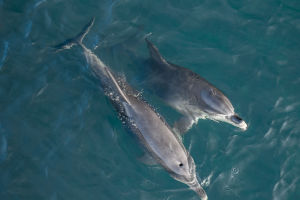
Colorful Clownfish

Clownfish, collectively known as the genus Amphiprion within the family Pomacentridae of the order Perciformes, are characterized by their vibrant colors, typically red to orange.
Apart from their transparent pectoral and soft dorsal fins, the rest of their fins are black. They have peculiar body shapes with variable colors, often featuring white stripes on their sides, resembling the facial makeup of a clown in Beijing opera, hence the name "clownfish."
Clownfish are tropical marine fish in the Indian-Pacific region, including the Red Sea, southern Japan, and Australia. They have small bodies, usually reaching lengths of around 11 centimeters.
They possess white patches on their foreheads and upper sides, with their anal fins consisting of 14 to 15 soft rays, mostly black except for transparent pectoral and soft dorsal fin rays. Juvenile clownfish have black scales with blue embellishments, while adults are predominantly bright red, with several black-edged white stripes encircling the area behind their eyes.
Related
 Dolphins' bond with humans: intelligence, curiosity, and emotion create a unique connection.
Dolphins' bond with humans: intelligence, curiosity, and emotion create a unique connection.
 The Indian rhinoceros, with its impregnable shell and robust physique, is virtually invulnerable to predators.
The Indian rhinoceros, with its impregnable shell and robust physique, is virtually invulnerable to predators.
 Explore the ocean's colorful wonders: Parrotfish, Emperor Angelfish, Mantis Shrimp, and Clownfish unveil nature's charm.
Explore the ocean's colorful wonders: Parrotfish, Emperor Angelfish, Mantis Shrimp, and Clownfish unveil nature's charm.
 Elephants: Majestic, intelligent, and vital to Earth's biodiversity, facing threats but deserving our protection.
Elephants: Majestic, intelligent, and vital to Earth's biodiversity, facing threats but deserving our protection.
 Guanaco faces threats but persists through adaptation and resilience in South America.
Guanaco faces threats but persists through adaptation and resilience in South America.
 Genetic analysis reveals how cat domestication shaped their behavior and physiology.
Genetic analysis reveals how cat domestication shaped their behavior and physiology.
These fish often inhabit coral reefs and rocky outcrops. During their juvenile stage, they form symbiotic relationships with sea anemones and sea urchins. Clownfish are highly selective about their living environment and carefully choose sea anemones that suit them. They also exhibit territorial solid behavior. Typically, a mated pair of clownfish occupies a single sea anemone, excluding other individuals of their kind.
Even with more giant sea anemones, they only allow some juveniles to enter. The tentacles of sea anemones secrete venom, but clownfish have a special mucus on their skin that can resist the toxins, enabling them to move freely within the sea anemone. Protected by sea anemones, clownfish are shielded from attacks by larger fish and use the anemones' tentacles for nesting and spawning.
They help "clean" food debris from sea anemones, which become their food source. Additionally, their presence attracts other fish to the sea anemone, providing hunting opportunities for the anemone. Moreover, clownfish assist sea anemones in removing necrotic tissue and parasites. This close mutualistic relationship between clownfish and sea anemones is termed "symbiosis" in biology.
Regardless of the size of the sea anemone, it is never spacious enough for a clownfish community. To survive in a confined space, they have special reproductive rules. Typically, within a community of clownfish, there is only one dominant female and one breeding male, preventing overbreeding, while smaller clownfish are infertile.

Clownfish are not the only hermaphroditic animals, but they are among the few species where males can transition to females, whereas females cannot become males. Each clownfish population consists of a dominant female and several adult males, with males being hermaphroditic in their juvenile stage. If the dominant female dies, one of the adult males undergoes hormonal changes, transforming into the new female of the population.
In this challenging expanse of the ocean, clownfish families rely on the special survival skills bestowed upon them by nature to create a haven, striving to increase against all odds.